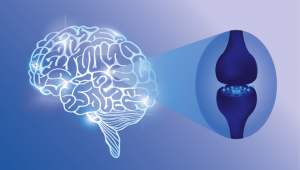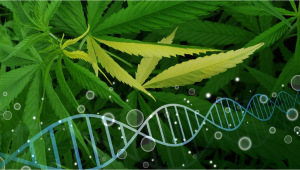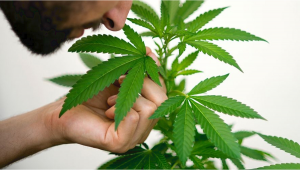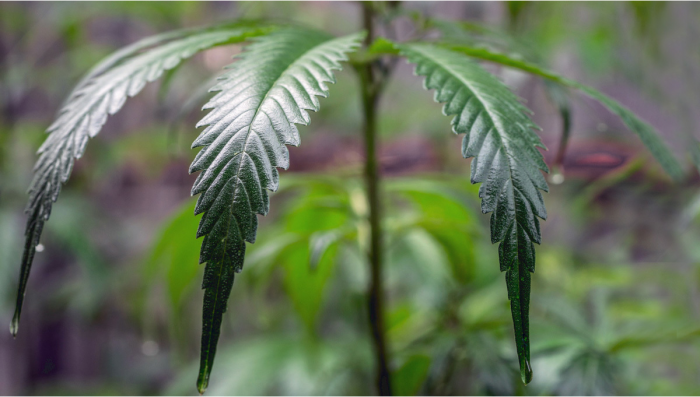Can Cannabis Plants Think?

- 1. How do humans think?
- 2. What are plant tropisms?
- 2. a. Phototropism
- 2. b. Thigmotropism
- 2. c. Gravitropism
- 2. d. Hydrotropism
- 2. e. Other types of tropisms
- 3. Plant tropisms compared to human senses
- 4. Is it possible for humans to communicate with cannabis plants?
- 4. a. What are the processes that cause this increase in production, potency, and overall yield?
- 5. In conclusion
With more than 300.000 plant species on Earth, it’s obvious that they have developed and adapted to survive and thrive; Now, they cannot experience sight, smell, touch and smell like we do, which can be a huge evolutionary disadvantage but they have other ways to adapt to the different environments. Plant tropisms are mechanisms by which cannabis seeds and plants adapt to changes, making them grow towards or away from a certain stimulus, this doesn't mean that they can think like us, but it's similar in a way.
1. How Do Humans Think?
When you think about living organisms you may think about humans, monkeys or dolphins but not plants because they don’t act like humans or other animals. The human and animal brain is super complex and has the ability to consume power, store memories, process thoughts and trigger reactions. Now, scientists still don’t understand exactly how the brain works but what they do know is that neurons are responsible for all of these actions and have connections inside the brain which are very similar to how the internet works because they are constantly exchanging information. So, for example, if you touch a hot surface, the neurons will process the information and determine what you should do next, predetermining and calculating the results a half-second (or faster) before the action is performed.
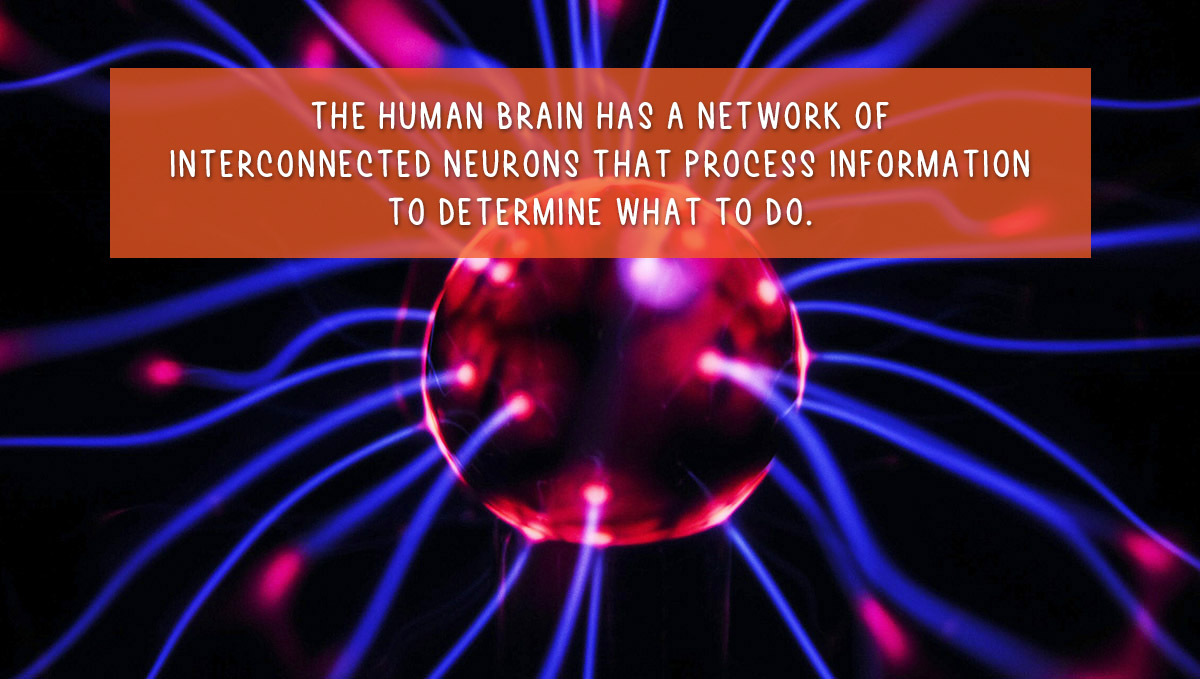
But plants don't have a brain like us, so you must be wondering how do plants know in which direction to grow? Well, plants have very complex mechanisms that allow them to know how and when they should grow among other things. Now, plants don’t have brains but have time-sensitive genes that function in a similar way to our nervous system and work together to know exactly how to react to certain stimuli.
For example, if your plants are suffering from colder temperatures for a couple of days, they will slow down growth and wait for the best time to grow leaves (or slow down leaf development) or seeds, and this also happens when you perform plant training techniques such as low or high-stress training. Also, researchers claim that plants can also remember information about light exposure, for example, and transmit this information to other plants so despite not having a structure equivalent to our brain, plant intelligence is very complex and allows for super interesting behavior thanks to plant tropisms.
So, plants don’t have brains or neurons like us humans and other animals. However, they still possess their own form of communication in the form of chemical interplays. Plants are capable of detecting and adapting to changes in their environment through chemical signals, and the cellular changes that those signals trigger. Take insect attacks as an example. Upon detecting such a threat, some plants are able to produce and release signaling compounds that attract the natural predators of the pests in question. So, not only do plants feel when insects are damaging their tissues, but they’re also able to release specific compounds into the environment to tempt specific predatory species to clean up the threat.
On top of this, plants can also “warn” their nearby kin about such attacks. They’re also able to produce chemicals that alert neighboring plants about pest activity. This plant-to-plant communication prompts the neighbors to start producing their own defensive compounds before the pests reach them, increasing the odds of survival. And that’s not all. Plants also seem capable of communicating with non-plant species. For example, they pump exudates into the soil to attract and fuse with certain species of fungi. Once linked together, the fungi mine for nutrients and receive sugars and other important compounds in return. Plants are also capable of responding to bacterial signaling in the soil, too. This form of communication results in roots providing a place for nitrogen-fixing bacteria to live. In return, these microbes receive shelter and nutrients.
2. What Are Plant Tropisms?
Just like all other animals and organisms, plants need to adapt to the different environments they’re exposed to and while other living beings can actually move from a place to another, plants cannot so they need to find other ways of dealing with unfavorable growing conditions, and this is where plant tropisms come in.
Plant Tropisms are mechanisms by which plants can adapt towards or away from certain stimuli such as light, gravity, water and touch. When this happens, the cells in one part of the plant can grow more quickly than in other parts, which will determine the direction in which your plant will grow, and, with the help of plant hormones like auxins, will help regulate this growth, causing the plant to curve or bend, for example, according to the type of stimulus. There are two types of response to a stimulus:
- Negative tropism: Growth away from the stimulus;
- And Positive tropism: Growth in the direction of the stimulus.
Within these two types of responses, there are several plant tropisms (or tropic responses) that can result in either negative or positive tropism and they are: Phototropism, Thigmotropism, Gravitropism, Hydrotropism, Thermotropism and Chemotropism.
Phototropism
Phototropism is responsible for directing plant growth towards the light, meaning that when talking about phototropism in cannabis plants, this is a type of positive tropism because, due to this tropism, plants will grow in the direction of a light source. This happens because cannabis plants have photoreceptors in their cells that detect light and, when detected, will direct plant hormones such as auxins to the branches that are getting less light, which will allow them to grow more in the direction of the light source and get the light they need.

Now, phototropism is a positive tropism when talking about the branches, leaves, and stem but when talking about the roots, it’s actually a negative tropism because the roots need nutrients and water to thrive which are obtained underground so they actually grow away from light, this means that a stimulus can have different tropic responses depending on the part of the plant. The photoreceptors found within cannabis plants that are able to detect light are known to science as phytochromes.
These structures exist in two different forms, namely Pr and Pfr. After a cannabis plant detects a light source in its external environment, it converts Pr into Pfr, which initiates a chain reaction of cellular and hormonal shifts that cause plants to grow towards the source of photons. However, plant phototropism varies depending on the wavelengths of light involved; not every wavelength produces the same reaction. Understanding how each can affect cannabis plants will help you as a grower when it comes to triggering or avoiding certain plant responses. For example, blue wavelengths of light are especially effective at initiating a strong phototropic response, whereas red wavelengths are less effective. Hence, many indoor growers elect to use LED grow lights that produce specific wavelengths of light that are designed to promote the optimal growth of cannabis plants at different stages of the growing cycle.
Heliotropism
Heliotropism is a type of Phototropism but, unlike Phototropism, this tropic response allows the flowers and stems to face and follow the sun as it moves across the sky, from sunrise to sunset. This type of tropic response can be easily seen with sunflower plants as they face the direction of the sun as it moves, which increases their temperature and makes them more attractive to pollinators.
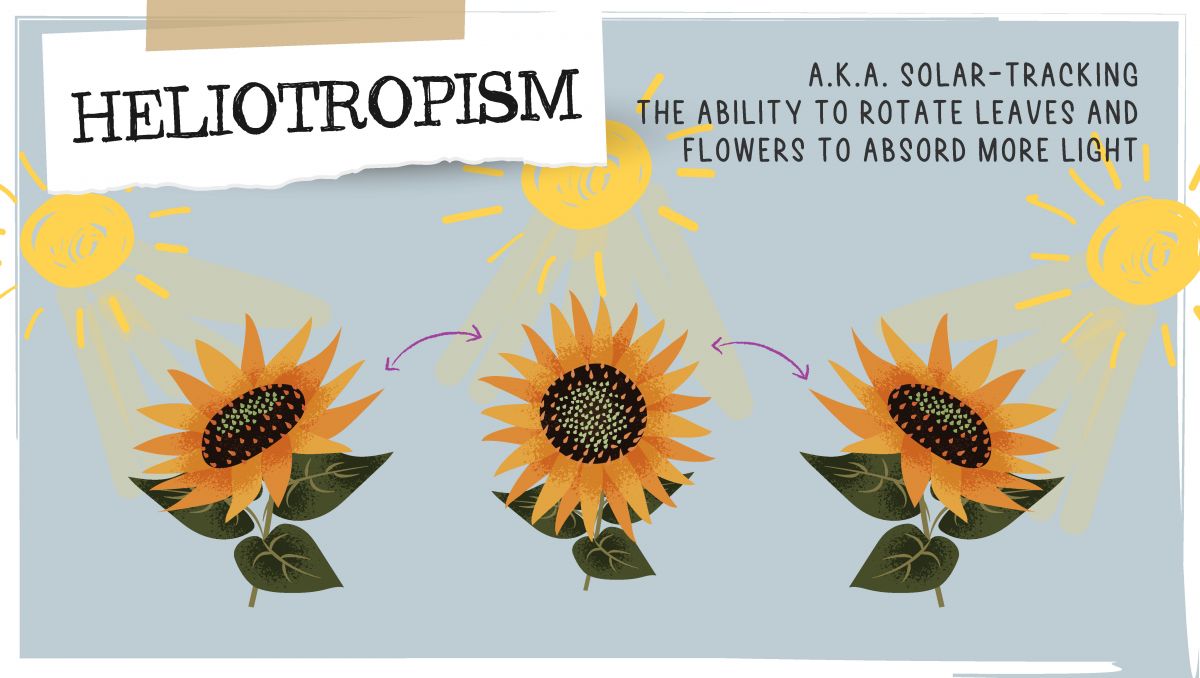
Now, there has been a long debate about Heliotropism and Phototropism being the same but research has discovered that they're not actually the same, despite being very similar so make sure you don't get them confused!
Thigmotropism
Thigmotropism refers to the response a plant has when touching it or when it encounters a solid object, for example, positive Thigmotropism occurs when a vine bends in several directions as it searches for a solid object for it to continue growing. This happens because the plant knows that certain cells (usually at the tip of the vines) are not in contact with a surface so it makes them grow faster than the other cells until they make contact with a surface that they can climb and can continue growing normally. Thigmotropism does not apply to cannabis branches but it does apply to a cannabis plant's roots.
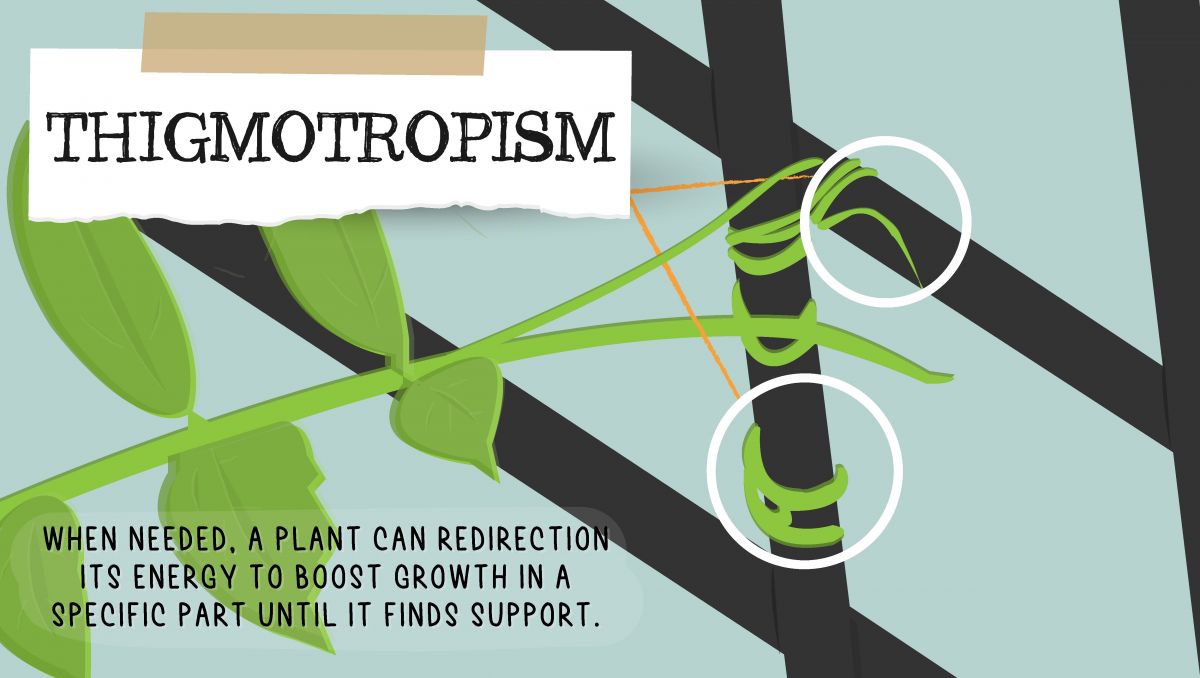
Now, as said before, depending on the part of the plant you’re talking about, a certain tropism can be positive and negative, and this is the case with Thigmotropism. As the roots grow deeper and deeper, they can find a rock or a big piece of wood that may become an obstacle for root growth and when this happens, Thigmotropism will make them change direction in order to avoid obstacles that can inhibit root growth; So despite being a positive tropism when talking about the flowers and branches, it would be a negative tropism when talking about the roots.
Gravitropism
Gravitropism is super important because it directs a cannabis plant's root growth and overall plant growth in response to gravity, meaning that it makes the roots grow downwards while the stem, branches and leaves grow upwards. Researches believed that the statocytes (a certain type of cell) are responsible for this type of tropic response. These cells can be found in the tip of the taproot and in the roots and branches, and are responsible for this type of tropic response, this is why the roots will always grow in the same direction of gravity while the plant itself will grow in the opposite direction.
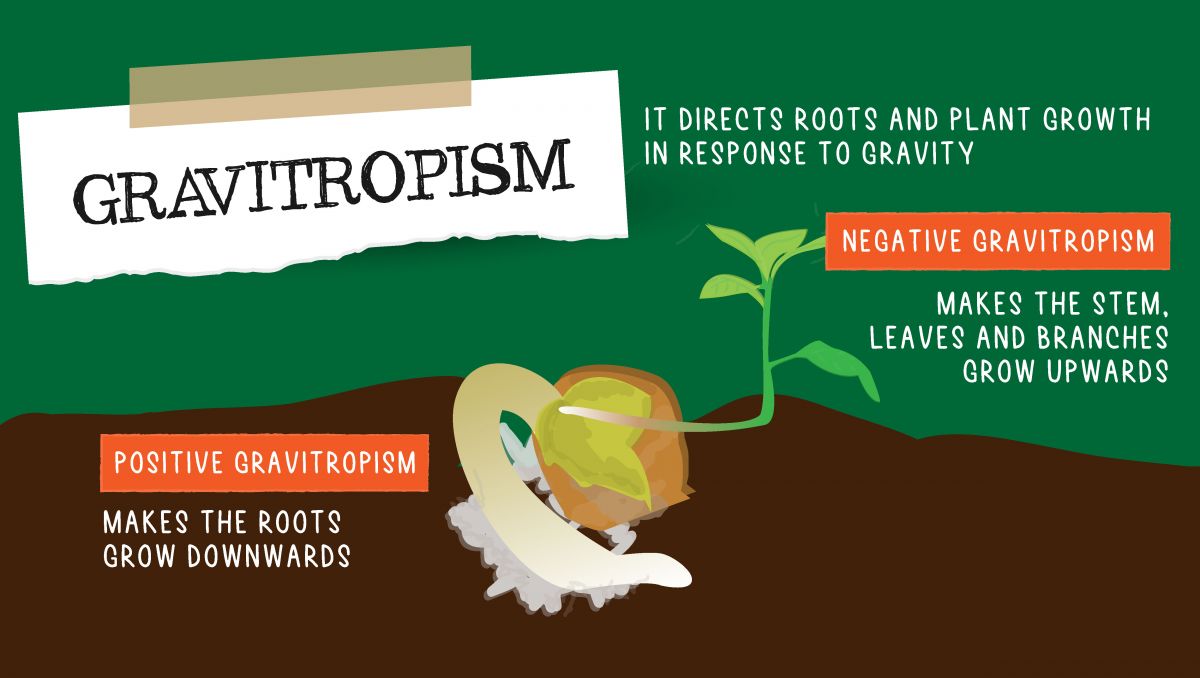
Plant hormones such as auxins also play an important role in this type of tropism because if the branches are not receiving light, the auxins will accumulate in the lower side of the branch which will induce cells in that part to grow faster until the branch starts bending upwards, this is why you have to adjust the ties when tying down the branches for example.
Hydrotropism
Hydrotropism is a tropic response that cannabis plants have when they encounter water. This tropism is super important because plants need water to live and this tropism serves as protection against overwatering or drought. For example, this happens when the substrate is dry, resulting in positive hydrotropism which helps the roots grow in search for water or in negative hydrotropism when the substrate is oversaturated and the roots need to grow away from water.
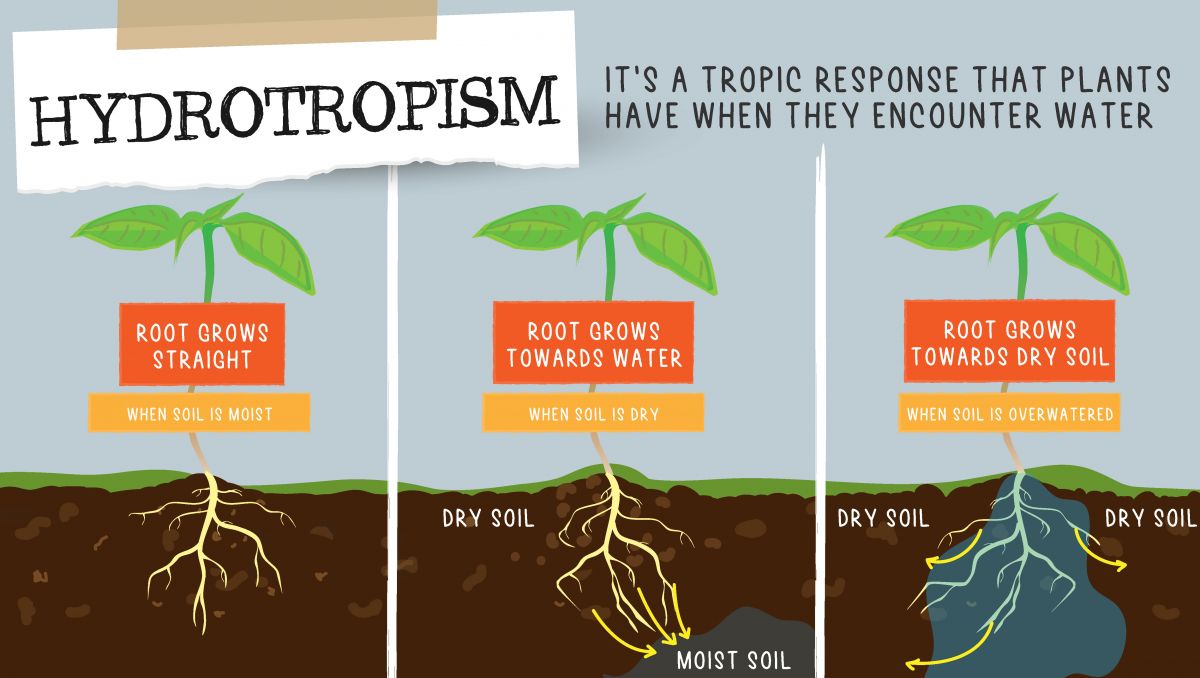
Now, when this happens, cannabis plants actually have to overcome (or become less sensitive) gravitropism, this means that the lack or excess of water can cause plants to exhibit hydrotropism over gravitropism which can be affected by the substrate itself. For example, roots growing in a wetter substrate have a tendency to exhibit more hydrotropism than gravitropism when compared to plants grown in well-aerated substrates, which will exhibit a much greater response to gravity than to water.
Other Types Of Tropisms
Apart from the plant tropisms mentioned, there are two more types of plant tropisms that affect how a plant grows and they’re Thermotropism and Chemotropism. These types of tropism are often harder to come by but are definitely present.
Thermotropism
Thermotropism refers to the growth or movement in response to heat, cold or any temperature changes that may occur. For example, roots may exhibit positive thermotropism at a certain temperature but exhibit negative thermotropism in colder or hotter temperatures, but due to the roots being underground it’s harder to see.
Chemotropism
Chemotropism is a growth response to chemicals; Roots are highly sensitive to chemicals and can respond positively or negatively to certain elements in the substrate; For example, Chemotropism helps plants reach and have access to nutrients in the soil which boost growth and overall plant development. Another example of Chemotropism happens when pollen lands on the stigmas (white hairs), when this happens, a cannabis plant will release chemical signals that directs growth to the ovaries to ensure the seeds are viable.
3. Plant Tropisms Compared To Human Senses
As mentioned, plants don’t actually think because they don’t have a brain like humans or animals but they do have tropisms that work with several hormones and direct plant growth in the case there’s a bug infestation or if they want to reach more water. This means that despite not having a brain, plants also react to stimuli just like we do but with their own kind of nervous system just not in the same way.
Can Cannabis Plants Smell?
Plants have a sense of smell that works differently than most living beings. They have certain receptors which contain ethylene that allow them to respond to chemicals in the environment. The sense of smell in plants allows them to coordinate flower or fruit maturity to attract pollinators that disperse pollen or seeds in an attempt to perpetuate their species.
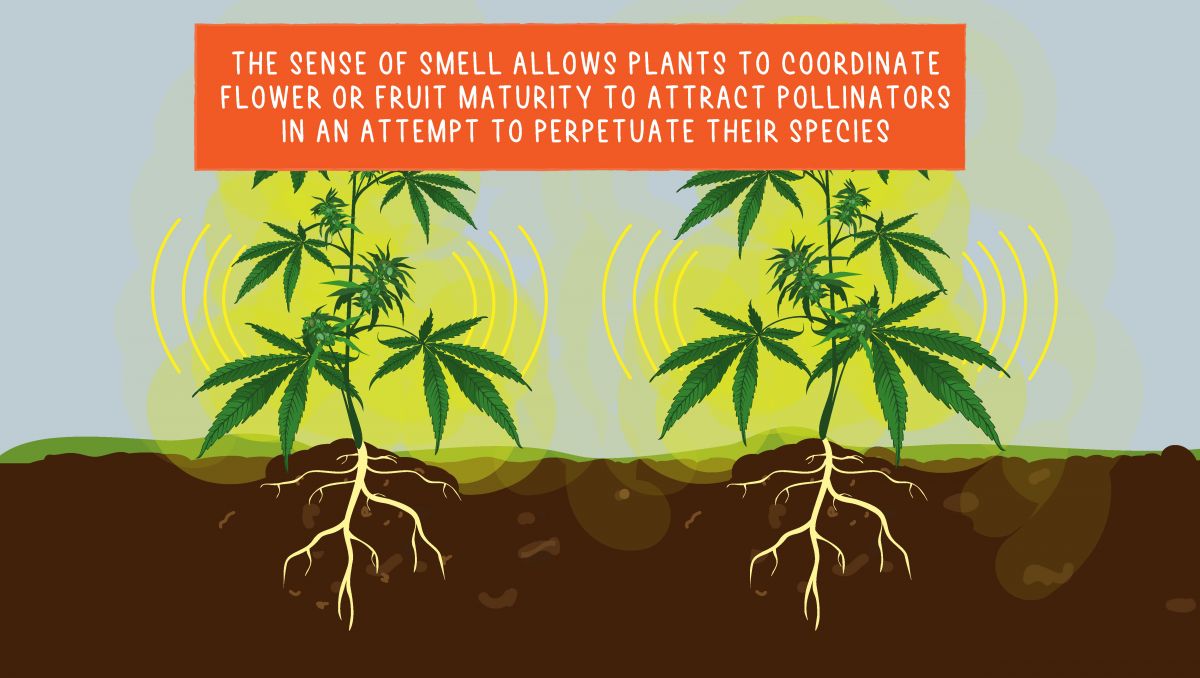
But the main importance of these receptors is that it allows plants to communicate with other plants when they have been attacked by insects, for example, because when attacked, plants release certain pheromones that warn nearby plants. This means that despite plants not using their sense of smell to smell things like we do, they definitely have one and use it to communicate.
| Humans vs Plants: Sense of Smell | |
|---|---|
| Humans | Plants |
| Olfactory bulb | Chemotropism; Hydrotropism. |
| Fossa | |
Can Cannabis Plants Feel Touch?
It’s known that cannabis plants are sensitive to heat, cold or strong wind, this is why plants growing in said conditions may slow down or have difficulty growing which is a form of tactile sensitivity. However, this sense of touch is more evident in some types of plants such as the Venus Fly Trap or the Mimosa Pudica which close automatically when touched; This means that plants have a sense of touch despite working in a different way than you would imagine.
| Humans vs Plants: Sense of Touch | |
|---|---|
| Humans | Plants |
| Specialized neurons in the skin | Thigmotropism; Thermotropism. |
| Sensory nerves | |
Can Cannabis Plants Taste?
Just like the other senses, plants do have a sense of taste but it works and it’s used in a different way. Just like some animals, plants have the senses of taste and smell interconnected. Plants actually have the sense of taste in the roots and can communicate with nearby roots so for example, when plants need water they will communicate to nearby plants that there is a lack of water, allowing them to close their stomata to avoid water evaporation and prepare for a drought.
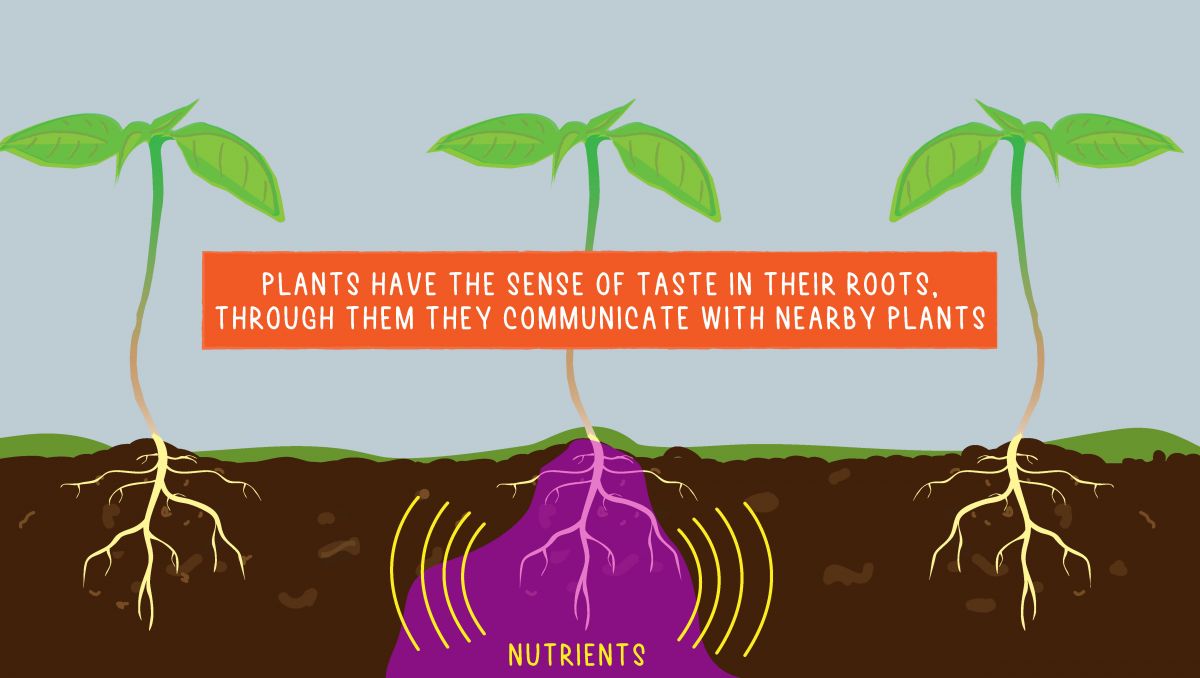
Have in mind that unlike the sense of smell with which plants can respond to chemicals in the environment, the sense of taste refers to water-soluble chemicals that can be present in the substrate and can attach to the roots.
| Humans vs Plants: Sense of Taste |
|
|---|---|
| Humans | Plants |
| Taste buds in the tongue | Chemotropism; Hydrotropism. |
| Throat and esophagus | |
Can Cannabis Plants Hear?
Even though plants cannot actually hear as we do, they do have a sense of hearing. For example, plants cannot hear music (because they don’t have ears or eardrums) but they can detect the vibration of an insect or even smaller being such as worms; Plants can also detect vibrations produced by other plants, some plants even produce ultrasonic vibrations which allows them to communicate and prepare in case there’s an insect attack or strong wind.
| Humans vs Plants: Sense of Hearing | |
|---|---|
| Humans | Plants |
| External ear | Chemotropism; Hydrotropism. |
| Ear canal | |
Can cannabis plants see?
Cannabis plants do not have eyes so they obviously don’t have a sense of sight the way we do but, thanks to phototropism, plants can sense the direction of light and can know if the light is stronger or weaker than usual. Plants also have phototropins which are light receivers that help them detect light in the blue spectrum and also have phytochromes that help them detect light in the red spectrum. Now, this doesn’t work like our eyes work because plants can definitely not form images like humans and animals but this helps them regulate their internal clock and helps them to regulate processes such as photosynthesis and transpiration, allowing them to “see” whether they’re getting more or less light than usual and what light spectrum they’re getting.
| Humans vs Plants: Sense of Sight | |
|---|---|
| Humans | Plants |
| Pupil | Phototropism and Heliotropism; Thermotropism. |
| Iris | |
4. Is It Possible for Humans to Communicate With Cannabis Plants?
So now that we have a basic education in how plants receive stimuli and interact with the world around them, the most pressing question is…. Can humans interact with, and have a positive impact on the life cycle, the quality of the final product, and the total final yield of a cannabis crop through differing forms of stimulus such as speech and music? There have been some extremely interesting research done on this subject, dating all the way back to the 1950s. Although most of this research is not peer-reviewed, the anecdotal evidence points heavily in favor of positive interaction between cultivators and their crops proving to have a favorable effect. The first true study we can point to comes from India’s Annamalai University. The study, run by Dr. T. C. Singh who headed the universities botany department at the time, found that the crops that had been exposed to music through the vegetative and flowering growth stages had an increase in biomass by a whopping 72% and in height by an impressive 20%. This study also showed that seeds that were germinated while exposed to music had an increase in fan leaf production, grew to a larger overall size, and had improved base characteristics like internodal length and stem strength. He first experimented with just classical music, but later moved on to the Indian folk music genre “Raga”.
He reported similar positive results with both styles of music and even found that dancing barefoot near the plants with no music on whatsoever produced accelerated plant growth with improved characteristics. The next study we can point to comes from Canada, where Canadian engineer and scientist Eugene Canby observed a 66% increase in production and yield size when he serenaded his crop with the dulcet tunes of Johann Sebastian Bach. More recently, Elias Tempton (a grower for the Sicky Buds dispensary), observed a marked improvement in his small home grow after placing a radio next to his crop and playing classical music 24 hours a day. He found the thickness of the dermis of the plants and the overall leaf structure were markedly improved.
With this in mind, he started playing classical music at the Sticky Buds main grow house and has seen those improvements replicated. And while he does believe the music has an effect on the plants, it’s not for the reasons we may think. In his view, the plants are actually responding to the improved emotional state of the humans that are interacting with the crop, and not so much the music itself. Matt Lopez, the grower who first produced one of the all-time most cultivated strains - Northern Lights - shares Elias’s views. He also has classical music constantly playing in his grow rooms, and like to interact with the crop in only positive ways. He is of the view that human interaction and having a positive mindset while interacting with your crop while playing classical music such as Beethoven or Mozart will make the plants grow faster, promotes plant health, and will result in larger yields with more cannabinoid potency.
What Are the Processes That Cause This Increase in Production, Potency, and Overall Yield?
To be totally honest with you, the jury is still out on this. There is still no hard science proving that the increases and benefits seen have anything to do with the music at all. But, let's break it down and see if we can explain how some of it all works. Sound is transmitted as waves, and for humans, these waves hit our eardrums which causes them to vibrate. This vibrational energy is converted into electrical impulses which are sent to the brain, where the electrical impulses are translated and processed. As we have briefly mentioned above, plants detect what we call sound by picking up the sound vibrations, but in a totally different way to us humans (and most other animal life). Plants have what is called protoplasm. This protoplasm is in a perpetual state of movement, which means it is affected by any vibrational frequencies. It is theorized that sound waves could change this perpetual state of movement, possibly speeding up the movement of these cells. This could be what leads to improved growth rates, improved nutrient uptake and processing, and overall plant vigor. There are some cultivators who swear by one genre of music, with others totally disputing these claims and backing a totally different genre altogether. Because of this, we won't make any sweeping statements or assumptions about one genre suiting cannabis growth better than another.
In fact, the studies seem to point towards the intention and the act of fully nurturing the crop to what's most important, not the music itself. For many of us cannabis cultivators, growing weed is about more than just the sticky icky that is produced as the final product. When you first start out growing, you may think of it as a fun hobby with some hugely beneficial end results, but if you are anything like us here at FastBuds, it will quickly turn into something a little deeper - even slightly spiritual in a way. This all sort of ties back into what we are discussing, that your intentions and headspace have a direct result on your crop, whether that be cannabis or anything else. Humans have been connected to cannabis for countless millennia, and the endocannabinoid system proves that we have a rich and deep history as a species with this wonder plant, obviously evolving alongside it.
The endocannabinoid system (ECS) is a complex cell-signaling system that has a direct result on the regulation of sleep, mood, appetite, memory, and fertility. To us, all of this points to the deep roots we all share with cannabis, and how important it may have been to the development of humans as a species. So next time you are tending to your crop, keep in mind the evolutionary benefit that this plant has delivered and keep those positive vibes at the forefront. Throw on your favorite beats, have a wiggle around, and just enjoy yourself. Who knows, it might just prove to make a huge difference to not only your own mental state, but also the strength, potency, and overall production of your favorite plants!
5. In Conclusion
Plants definitely think but not like we’re used to. Not only cannabis plants but all plants have mechanisms such as the mentioned above that allow them to see, hear and smell among other senses, which is essential for plant growth. Without these senses, your plant will not grow properly because the roots, branches and leaves will not know in which direction, how and when to grow. If you have more information about plant tropisms that can help fellow growers feel free to leave a comment in the comment section below!








